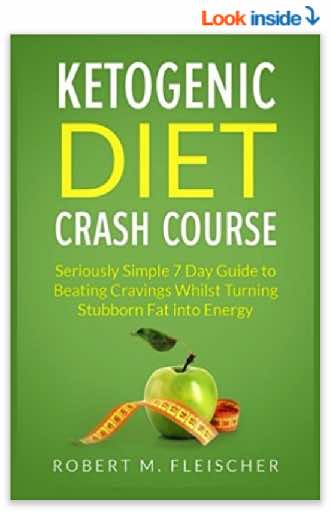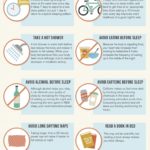Do you know what the ketogenic diet is? No? Let me tell you what it is!
It’s a low-carbohydrate and high-fat diet intended to burn body fat. This is achieved after the low consumption of carbohydrates forces the body into a metabolic state called ketosis. When in ketosis, the body will break down fat into fatty acids and ketones, and then use ketones as an energy source instead of glucose.
Be aware that this is quite an extreme diet and totally different from other much more balanced diets, like the Mediterranean diet and the colon cleanse diet. Negative side effects can arise – mainly elevated cholesterol levels, constipation and irregular menstruation. Consult a doctor or nutritionist before you give it a try!
How To Structure a Ketogenic Diet Menu
A ketogenic diet menu requires that you track the amount of carbohydrates (carbs) consumed as you are only allowed to eat between 20-50 grams of it each day. The intake of proteins should be moderate, but ultimately depends upon gender, weight, height and if exercise is done.

The majority of the calories will come from fats. This general approach will ensure that people following this diet plan will go into ketosis. And that is the main objective of the ketogenic diet menu.
The daily nutrient intake of this diet normally works out as 75% of calories coming from fats, 20% coming from protein and 5% coming from carbohydrates. As a ketogenic diet reduces hunger, most people find that they don’t necessarily have to count calories, although it can be comforting and helpful to do so.
Why Is The Ketogenic Diet Menu High In Fat And Moderate In Proteins?
Whereas fats have no effect on your blood sugar and insulin levels, protein does affect both blood sugar and insulin, if consumed in large quantities. Should you overeat protein, over 50% of the excess protein will be converted to glucose. The increased levels of glucose in the blood will raise insulin levels and harm your body’s ability to release and burn fatty acids.
In addition, eating a diet packed with lean protein can make you sick with a condition known as “rabbit starvation“.
What Is a Cyclical Ketogenic Diet Menu Plan?
A cyclical ketogenic diet (CKD) is different from a normal (non-cyclic) ketogenic diet. Instead of constant ketosis, where only up to 50 grams of carbs is allowed, a CKD menu plan includes periods of time where you can eat 600 grams of carbs.
Apart from being psychologically important, these so-called refeed periods help to refill glycogen stores and restore hormone levels.
Following a CKD can be complex in comparison to the non-cyclic ketogenic diet, as it requires dieters to closely monitor the amount of carbohydrates they eat during the refeed periods.
Though more intense and difficult, CKD maximizes fat loss for dieters that want to be able to exercise intensively. The refilled glycogen stores give you a boost in energy, allowing you to exercise and thereby maintaining some of the muscle mass that would otherwise be lost. That sort of physical training would normally not be possible while following a ketogenic diet menu plan, since you are in ketosis all the time.
A Step By Step Guide
- Begin by obtaining a carbohydrate counter guide. It will help you to learn the carb counts of the foods consumed. This is a crucial aspect of the diet plan.
- Next, do a carbohydrate inventory. Thoroughly go through and clear your kitchen of all the high carb foods. This includes so-called complex carbs that come from whole grain foods.
- Fill your refrigerator and kitchen cupboards with new low-carb foods. This is an essential step that you can’t skip. It will help you stay on the right track, especially days when your spirit is low.
- A ketogenic diet menu plan only require normal foods that are found in every household, so there is no need to buy any special foods or products. Ketogenic foods are essentially just real whole foods that are as natural as possible, which means they are not highly processed.
- The one exception to this are artificial sweeteners. Though highly processed, these are important to include in a low-carb diet. This is because artificial sweeteners have less negative effects on your health than foods sweetened with sugar.
- Another important point: Expect to spend more time in the kitchen. Following a ketogenic diet menu requires that you cook whole foods, and that takes time and effort. At least if you want delicious results!
- Thinking about your meals and how you will plan them will help you to buy the right foods whilst giving a solid framework to follow when it’s time to cook. If you have planned exactly what to eat for dinner tonight, it will be a lot easier to stay away from the high-carb foods that you used to eat.
- Drink water! When carbohydrate intake is reduced, your kidneys will start dumping the excess water your body has been holding due to a previously high intake of carbohydrates. It is very important to drink enough water to replace what has been lost. Sticking to 1.5 – 2.5 liters of water per day is a good rule of thumb for keeping hydrated. Should you get headaches or migraines, a higher intake of water is needed, as levels of magnesium and potassium have become critically low due to the dumping of water by the kidneys.
- Avoid high-carb foods. These foods will raise your blood sugar and insulin levels, which you want to avoid at any cost when following a ketogenic diet menu plan. To help you monitor how your body is responding in the first couple of weeks, you could purchase reagent strips that allow you to check if you are in ketosis. After the first four weeks of following the menu plan, the objective is to adapt to this new metabolic state called ketosis. As soon as that happens, your body should be burning ketones as fuel. If you are using a reagent stick, you will be able to notice a change in the color once you have adapted to burning ketones as fuel.
- Find a way to track your daily food intake and carb counts. For example: Use a spreadsheet or an online tracker, or just write it down in a notebook. All of these methods will help immensely to monitor your diet plan.
- Prepare for social situations where you will be tempted by unhealthy foods such as beer, pizza, ice cream etcetera. Create methods and ways to deal with these situations, so that you won’t be blindsided when, for example, someone at work brings in your favorite sweets or pastries and puts them right in front of you.
- If weight loss is your primary reason for starting to follow a ketogenic diet menu plan, your main focus should not be your weight. Yes, that’s right! Since the weight of a human body can fluctuate of up to two kilograms during a day – due to the amount of water retained – it is almost impossible to observe fat loss from one day to another. Instead, you should limit weighing yourself to only one time per week, or even better, use a tape-measure to keep track of your body. Using a tape-measure is almost always better than a scale, if you want to accurately track your progress.
- The final step, and perhaps our best advice, would be to recognize the amazing long AND short term health benefits that are associated with this kind of low-carbohydrate diet. By doing so, you will focus less on the actual weight loss, and more on the more important stuff – improved overall health!
Want To Learn More?
Ok, you found the topic of this article to be interesting, and now you want to learn more about it. As we do most of the time, we suggest a visit to Amazon. They have every possible book you might ever want to read. The two books pictured above have high customer reviews and could be well worth a read. Or, you could try to educate yourself online. In that case, we would like to recommend that you start right here.
Good luck! 🙂



